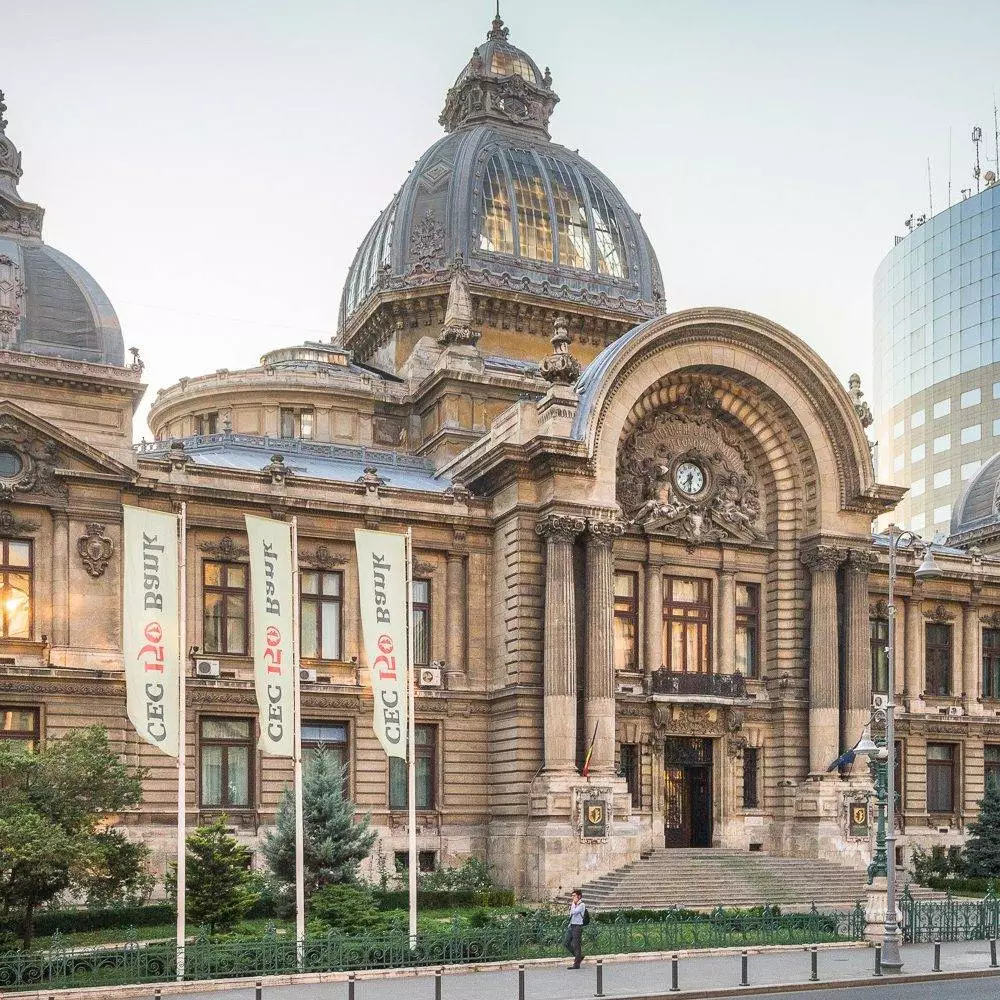Description
The CEC as an institution was established in 1864 by a law initiated by Alexandru Ioan Cuza. At first it worked in various buildings, after which in 1875 the construction of its own headquarters began. On the site of the CEC today was the church of St. John the Great, which was demolished to make room for the first construction. CEC developed rapidly, so that the old headquarters becomes inadequate. It was decided to demolish it and at the same place began the construction of the current headquarters, according to the plans of the French architect Paul Gottereau. The beginning of the work was marked by a ceremony that took place on June 8, 1897. Participants included the royal family, members of the government, members of the CEC board of directors and the architect Paul Gottereau. The construction was completed in 1900 and since then the CEC has functioned in this building without any other notable changes.
Currently, the palace still houses the headquarters of CEC Bank, the descendant of the old CEC (House of Savings and Consignments). The palace, built in an eclectic style, ends with a dome of glass and metal. The entrance is crowned by a pediment in the semicircle supported by a pair of composite columns.
The four corner volumes, decorated with pediments and coats of arms, are covered by Renaissance-style domes. A much larger dome covers the central hall of the edifice, in which different counters of the institution operate.
The judicious decoration of the facades, the balance of the volumes that compose it make this palace an interesting architectural monument of the city.

Reviews
There are no reviews yet.